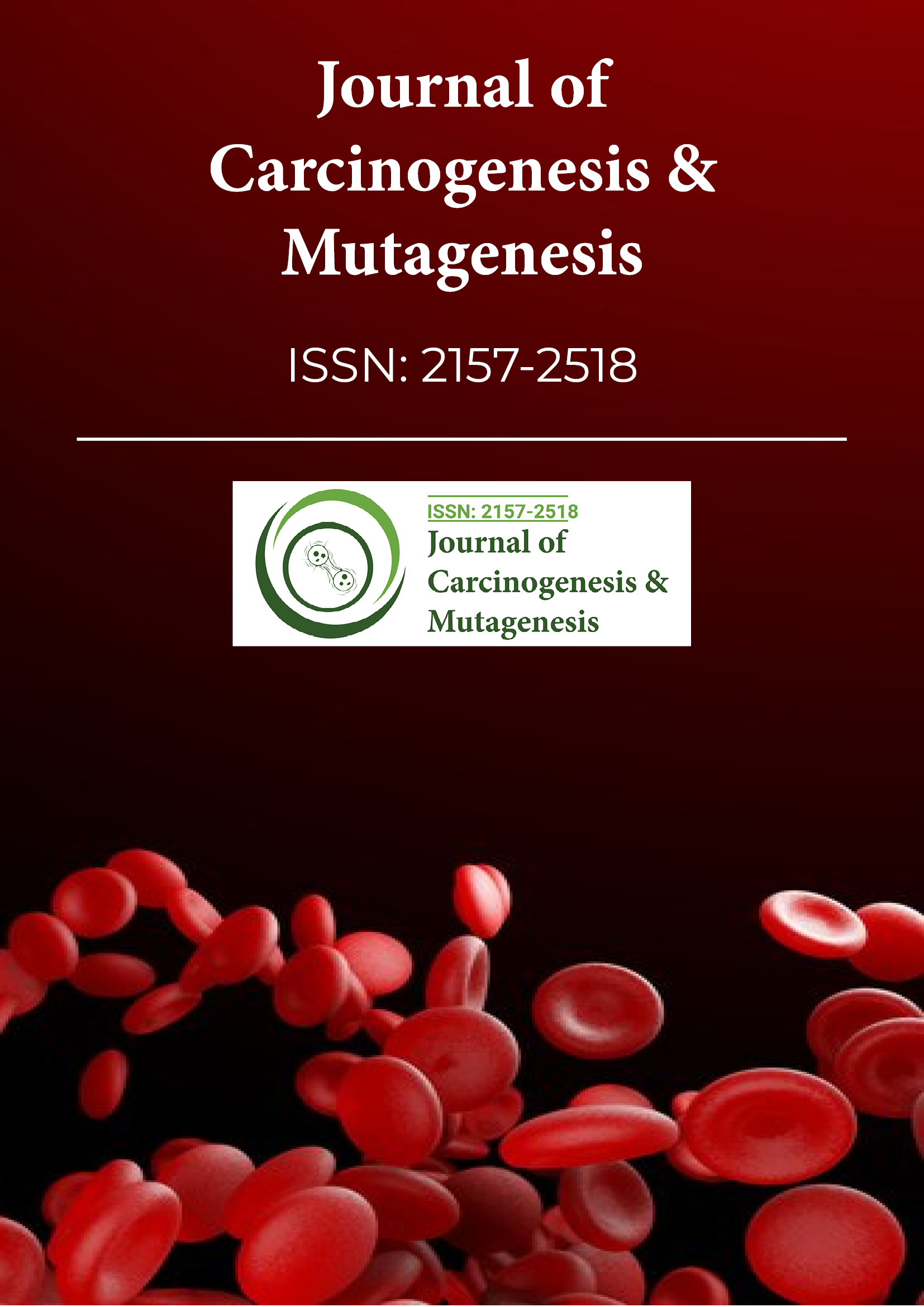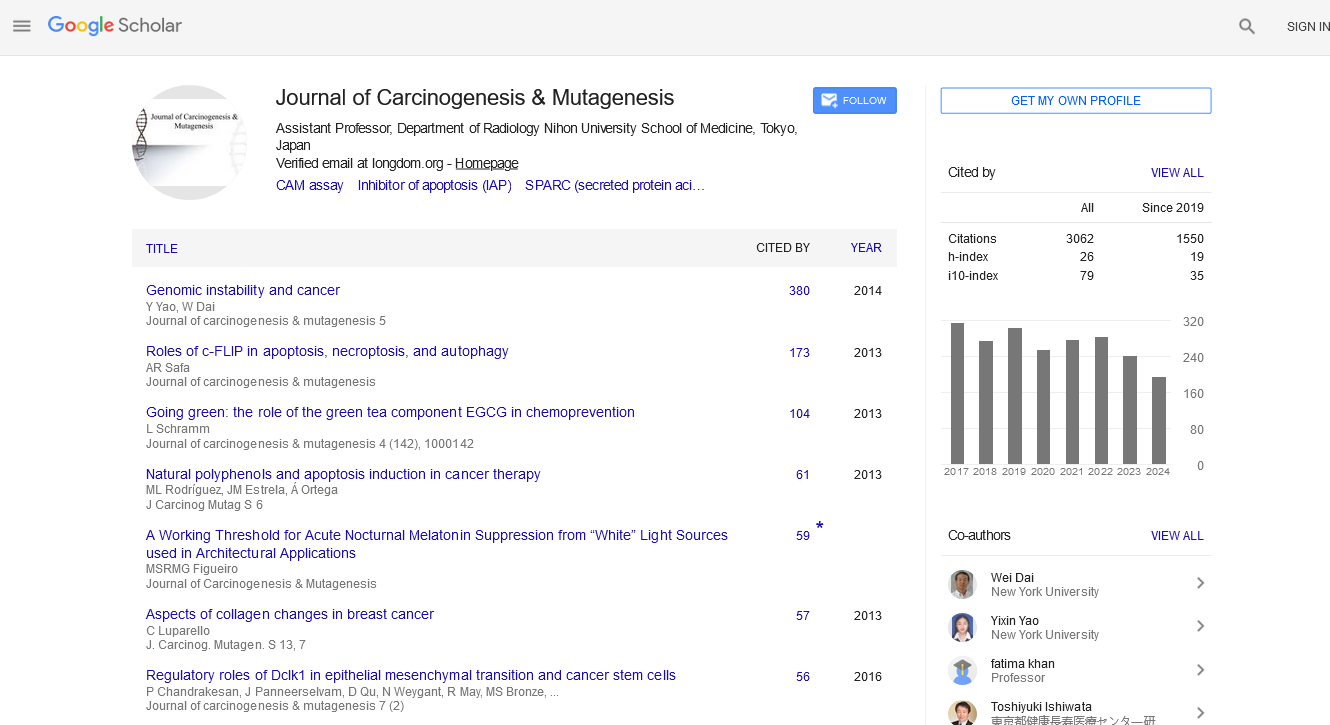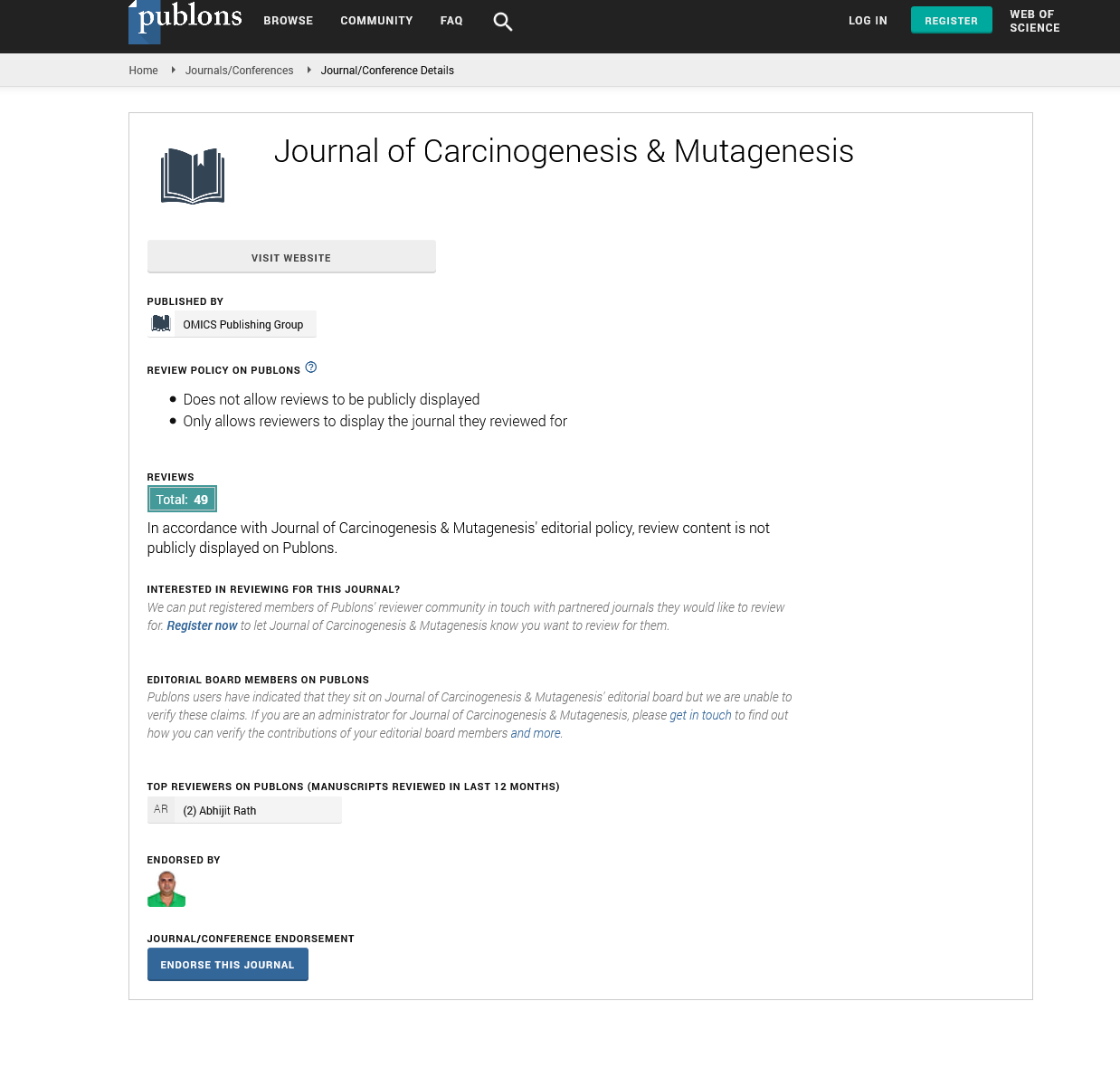PMC/PubMed Indexed Articles
Indexed In
- Open J Gate
- Genamics JournalSeek
- JournalTOCs
- Ulrich's Periodicals Directory
- RefSeek
- Hamdard University
- EBSCO A-Z
- OCLC- WorldCat
- Publons
- Geneva Foundation for Medical Education and Research
- Euro Pub
- Google Scholar
Useful Links
Share This Page
Journal Flyer

Open Access Journals
- Agri and Aquaculture
- Biochemistry
- Bioinformatics & Systems Biology
- Business & Management
- Chemistry
- Clinical Sciences
- Engineering
- Food & Nutrition
- General Science
- Genetics & Molecular Biology
- Immunology & Microbiology
- Medical Sciences
- Neuroscience & Psychology
- Nursing & Health Care
- Pharmaceutical Sciences
Abstract
The Role of PGE2 and its Corresponding Receptors (Ep1-4) in Oesophageal Carcinogenesis: Novel Therapeutics for Chemoprevention and/or Intervention
Michelle C. Lowry, John V. Reynolds and Mary-Clare Cathcart
The incidence of oesophageal adenocarcinoma (OAC) is increasing. At present, OAC is the 7th leading cause of cancer deaths worldwide. The use of aspirin and other non-steroidal anti-inflammatory drugs (NSAIDs) reduce the progression from Barrett’s oesophagus (BO) to OAC. These cyclooxygenase (COX) targeted agents have demonstrated considerable promise, although long-term use has been associated with both gastrointestinal (GI) damage and increased cardiovascular risk. COX-2 overexpression is seen in BO and OAC patients and is a promising target for chemopreventive and/or therapeutic approaches. However, the unfavourable safety profile associated with long-term COX-2 targeting emphasizes the need to both understand and target specific downstream effector mechanisms. The role of pro-inflammatory prostaglandin E2 (PGE2) and its corresponding EP receptors have gained considerable attention in recent years, where they have been associated with tumourogenesis in a number of inflammatory-driven cancers, including OAC. This review will discuss the role of COX-derived PGE2 signalling in OAC development and progression, with specific emphasis on EP receptor expression and function. We will compare and contrast the potential of traditional NSAIDs, selective COX-2 inhibitors and EP antagonists as chemopreventive and/or therapeutic agents. Finally, we will discuss the promise of novel small molecule selective EP antagonists, which have recently been developed and are currently under clinical investigation.


